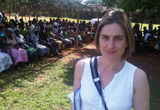 Depending on your world view, our obsession with food at Christmas (witness packed supermarket aisles, and the acres of menu ideas churned out by newspapers) is either a glorious, well deserved indulgence or evidence of an obscene festival of gluttony.
Depending on your world view, our obsession with food at Christmas (witness packed supermarket aisles, and the acres of menu ideas churned out by newspapers) is either a glorious, well deserved indulgence or evidence of an obscene festival of gluttony.
Come January many of us will have embarked on body sculpting diets. Before you do, read Richard Smith’s “Are some diets ‘mass murder,” for which the former BMJ editor ploughed through five books on diet and some of the key studies. His conclusion? That from low fat to carb-free, many diets are based on fragile science, and the long term results may be terrible.
This was sobering for me who, along with my husband and a group of friends, has been a rather smug devotee of the fashionable, intermittent fasting “5:2” diet for the last 18 months. The diet requires you to restrict your diet to a daily 500 calories for two days a week, the reward for which is eating like a queen (at least a fairly sensible one) for the remaining five. “Are you on a ‘5’ or a ‘2’ day?” has become an all too common refrain in my life.
Based on his reading, Smith urges us to read Nina Teicholz’s “deeply disturbing” book The Big Fat Surprise, whose subtitle is “Why butter, meat, and cheese belong to a healthy diet.” Teicholz traces how the dominant 1970s hypothesis that saturated fat is the cause of cardiovascular disease has largely been demolished over the last decade.
It also shows how “overenthusiastic scientists, poor science, massive conflicts of interest, and politically driven policy makers can make deeply damaging mistakes,” writes Smith. The gusto with which policy makers take up some of these diets is akin to uncontrolled experiments on large populations. “It’s surely time for better science and for humility among experts,” he concludes.
If you are an international reader of thebmj.com do vote in the online poll: Are some diets mass murder?
For some entertaining science, read the Australian paper When somebody loses weight, where does the fat go? Most people think the matter is converted into energy but the truth is we breathe most of it out. Annemarie Walsh’s linked animated film is a fantastic 30 second primer on this paper.
Finally, a letter just posted on thebmjcom asks what service the NHS is giving patients left with large folds of redundant skin after bariatric surgery. As many as 92% of people developed excess skin after surgery—often know as “apron” or “bat wings”—and 75% required body contouring surgery. “As clinicians we must remain vigilant to the fact that these patients may benefit from early input from the plastic and reconstructive team,” writes Alexandra Bucknor and Chidi Ekwobi.
Rebecca Coombes is magazine editor, The BMJ.
